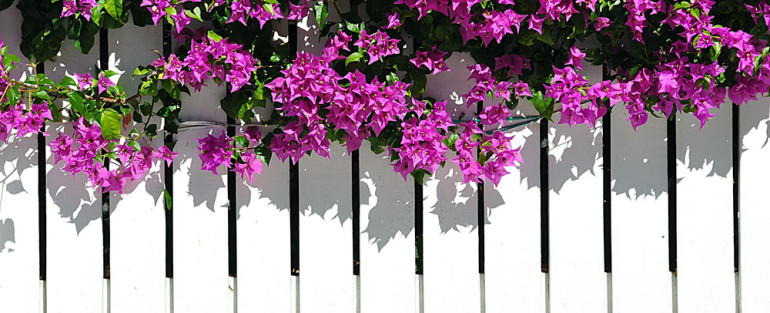
Choosing a Fence That Enhances Your Property
Watch nearly any family movie from the 1940s and at some point, you’re going to see at least one house with a white picket-type fence surrounding it. Watch enough of those movies and you’ll see that, while these fences – at least those in the front yards – may be similar in height and “first glance” appearance, they’re actually very different, using different styles to give each house a unique character.
In fact, fencing has been used for years to enhance homes and define yards – both front and back – and to give that “coming home” feeling. But recently, for many, many years, it seemed that just about the only fence you’d ever see was the so-called stockade style fence – you know the style: Lots of skinny panels in a row, each sporting a pointed peak at the top. As a fence, the stockade served its purpose – it divided spaces and defined yards. But from a stylistic point of view, it didn’t have a whole lot to offer – especially when everyone on the block had one in their yard.
Today, homeowners are breaking free of “stockade syndrome,” choosing fences that use styles, materials, finishes and other design elements and embellishments that not only help make a design and style statement but can also add significant value to your property. If you’re considering a fence for your home, here are a few ideas to help ensure the fence style you choose enhances your home’s style, making it look more welcoming and more attractive:
Gothic: Gothic fencing provides a more traditional “picket look,” with each picket featuring a top edge that that resembles a fleur de lis. Gothic designs are available in wood and vinyl materials, and both materials offer lots of finish options, including solid colors and stains. Gothic styles are available in a variety of heights so you can match front and backyard styles if you choose.
Full or partial lattice: Depending upon the amount of lattice used, this style can be used for contemporary and traditional homes and works well with craftsman-style bungalows as well. Lattice also helps break up the appearance of long expanses of fencing, tricking the eye into “seeing” a larger space.
Iron: Especially popular during the 18th and 19th centuries, iron fencing has experienced a big revival in recent years, especially among those with larger homes seeking to create an “estate” appearance. Paired with a matching gate and depending upon the design, an iron fence makes a bold statement for both contemporary and traditional homes. Because iron fences provide little privacy, they are often used in combination with other fence types to enclose back yards or other private areas.
Horizontal plank: Think about it: Most fencing uses vertical pickets. Turning that tradition on its side makes this fence a popular choice for owners of modern homes as well as ranch-style homes.
Of course, when it comes to selecting a fence, style is only one part of the equation. Today’s fences are available in lots of materials and finishes, which means you can truly personalize your outdoor space. Traditionally, wood has been the most popular choice among consumers for a couple of big reasons: First, wood tends to be less costly than many other materials, and second, it accepts a wide range of finishes, including stains and paints. As a result, depending on the finish you select, wooden fencing can be used to enhance a variety of home styles, from rustic country styles to cottage and Victorian homes.
While wood is amenable to lots of different finishes, it also requires upkeep to maintain its fresh appearance. Unless you like a really natural, rustic appearance, that can mean scraping, sanding and priming to keep it looking its best. Even rustic, natural fencing needs some occasional treatment to keep the wood in good condition and help it last for years and years. That’s why vinyl fencing options have become so popular in recent years. And while early versions of vinyl fencing looked, well, plastic, today’s manufacturing techniques have come a long way to provide realistic-looking fencing that can’t be told apart from its wood counterparts unless you get really, really close – and sometimes, not even then. Even iron fences come in a variety of styles, colors and other finish options.
Finally, no matter what type of fencing you choose, to get the best possible look and ensure its longevity, it’s a good idea to abandon your notions of “do-it-yourself” installation. Putting up a fence may look pretty straightforward – dig some holes, drop in some posts and screw on the horizontal sections, right? – but actually, it’s not nearly that simple. Proper installation requires adequate anchoring of vertical and horizontal supports in addition to precise leveling across often long expanses of ground in order to make sure the fence looks good and performs as it should. Professional installers understand the investment you’ve made, and they have the experience and skills necessary to make sure the fence you choose gives you years and years of enjoyment and also helps boost your property’s overall value.


